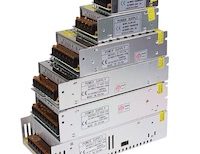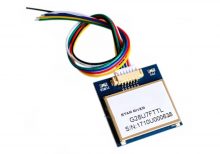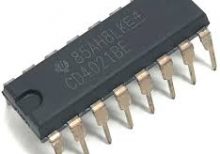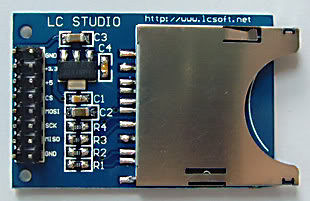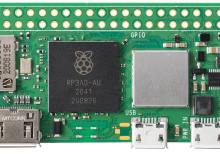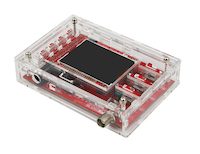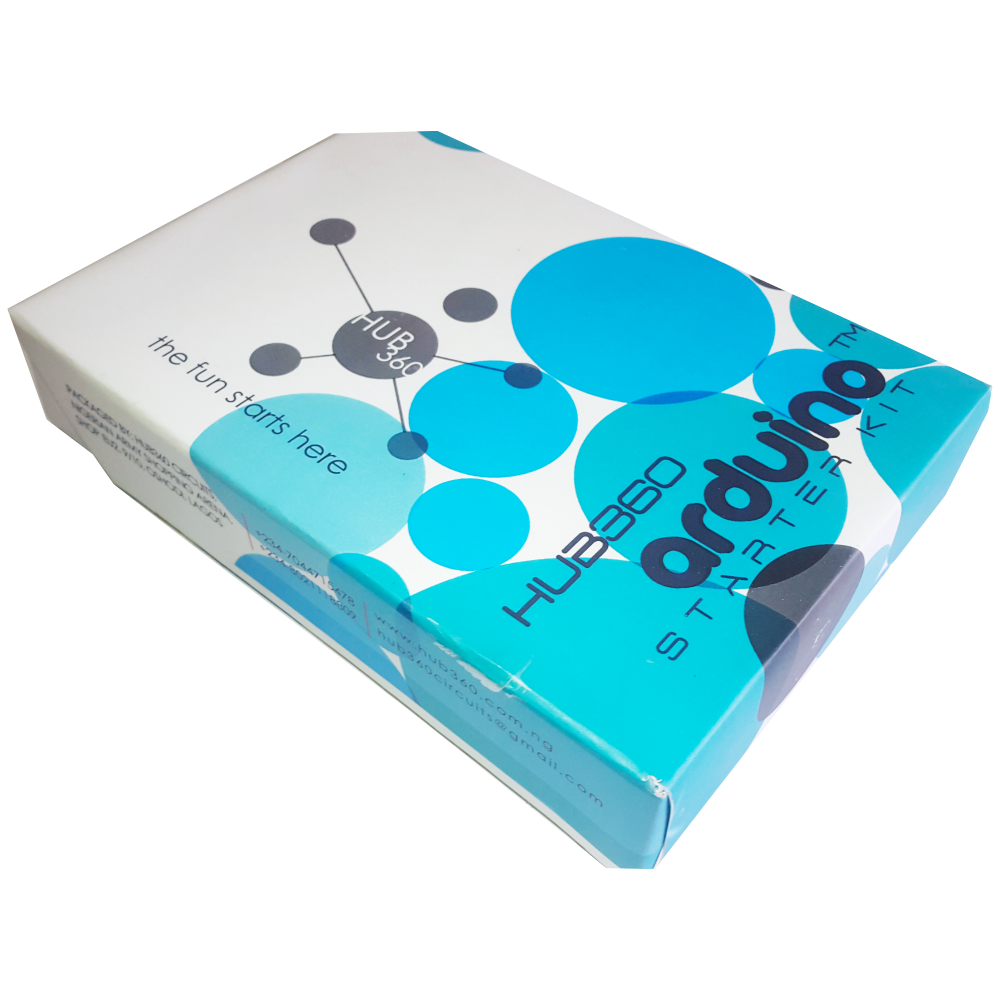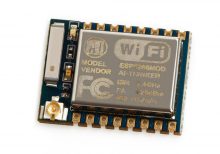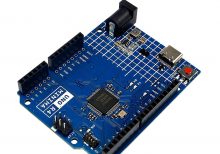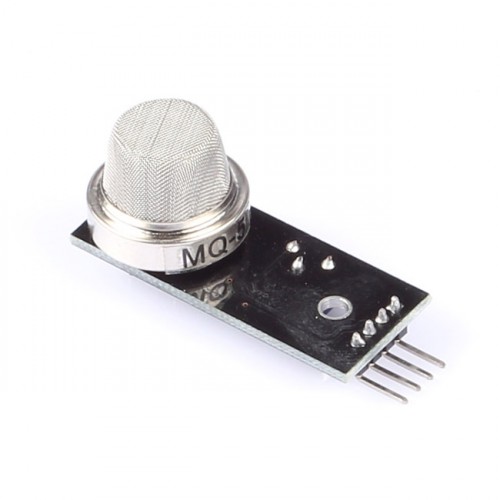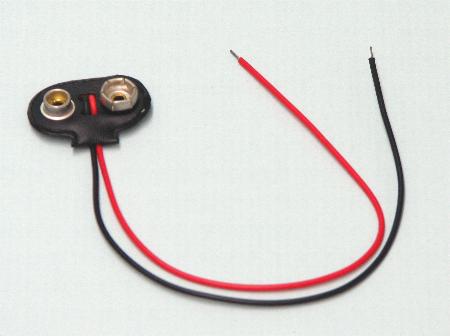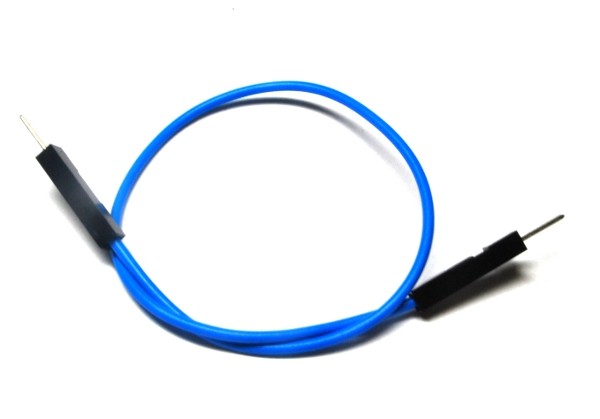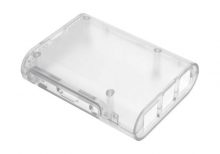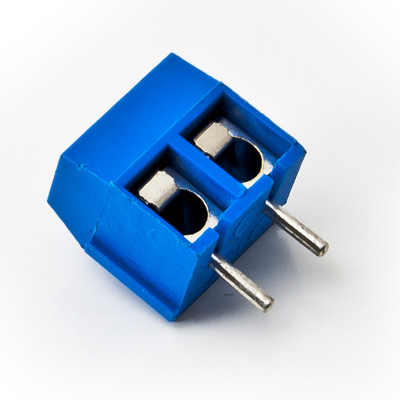|
Description |
The 5V 5A Power Supply is a compact and reliable power source designed to provide a stable 5V output with a maximum current of 5A. It is suitable for a variety of applications, including powering single-board computers like the Raspberry Pi, LED strips, small electronics projects, and other devices that require a steady 5V DC supply. The power supply features over-voltage, over-current, and short-circuit protection to ensure the safety and longevity of connected devices.
Key Features:
- Output Voltage: 5V DC
- Output Current: 5A
- Power Output: 25W
- Input Voltage: 100-240V AC, 50/60Hz
- Connector Type: Screw terminals or DC barrel jack
- Protection: Over-voltage, over-current, and short-circuit protection
- Efficiency: High efficiency for consistent power delivery
- Cooling: Built-in cooling or heat dissipation mechanism
- Certifications: CE, FCC, RoHS compliant
Technical Specifications:
- Output Voltage: 5V DC ± 5%
- Output Current: 5A
- Power Output: 25W
- Input Voltage: 100-240V AC, 50/60Hz
- Ripple & Noise: ≤ 100mV
- Load Regulation: ± 2%
- Line Regulation: ± 1%
- Operating Temperature: -10°C to +60°C
- Storage Temperature: -20°C to +85°C
- Humidity: 0% to 95% non-condensing
- Dimensions: Approx. 120mm x 60mm x 35mm
- Weight: 200 g
- Connector Type: Screw terminals or 5.5mm x 2.1mm DC barrel jack
- Cooling: Passive cooling or built-in fan (depending on model)
Applications:
- Single-board Computers: Ideal for powering Raspberry Pi, Arduino, and other microcontroller projects.
- LED Strips: Suitable for small-scale 5V LED strip installations.
- Electronics Projects: Perfect for powering small electronics and DIY projects.
- Communication Equipment: Can be used to power communication devices and networking equipment requiring 5V.
- Industrial Use: Suitable for industrial control systems and small-scale automation projects.
|
The VK2828 G28U7FTTL is a high-performance GPS module designed for aviation and other high-precision applications. It features a wide range of operational frequencies and is capable of delivering accurate positional data for navigation and tracking purposes. The module is ideal for integration into systems requiring reliable and precise GPS information.
Key Features:
- High Update Rate: Capable of updating position data from 1Hz to 10Hz, allowing for smooth and accurate tracking
- Sensitivity: Designed for use in aviation, providing robust performance in various environmental conditions
- Compatibility: Supports standard GPS protocols for easy integration into existing systems
- Compact Size: Suitable for integration into space-constrained applications
Technical Specifications:
- Type: GPS Module
- Model: VK2828 G28U7FTTL
- Update Rate: 1Hz to 10Hz
- Frequency Range: Supports standard GPS frequencies
- Sensitivity: High sensitivity for accurate positioning
- Protocol: NMEA-0183
- Operating Voltage: Typically 3.3V to 5V DC
- Power Consumption: Low power consumption for battery-operated applications
- Dimensions: Varies by model, generally compact for easy integration
- Antenna: May include an external or integrated antenna depending on the model
Applications:
- Aviation: Navigation and tracking for aircraft
- Marine: Boat and ship navigation
- Automotive: Advanced driver-assistance systems (ADAS)
- Outdoor Activities: Hiking and sports tracking
- Industrial: Asset tracking and fleet management
Usage:
- Powering the Module: Connect the GPS module to a suitable power source within the specified voltage range.
- Connecting the Antenna: Ensure the antenna is properly connected and positioned for optimal signal reception.
- Data Integration: Use the NMEA protocol to receive GPS data, including latitude, longitude, altitude, and time.
- Integration: Connect the GPS module to your system or application for real-time tracking and navigation.
Caution:
- Signal Reception: Ensure the module has a clear view of the sky for optimal GPS signal reception.
- Voltage: Verify the operating voltage to avoid damage to the module.
- Antenna Placement: Position the antenna to minimize interference and maximize signal strength.
Datasheet:
For detailed technical specifications, refer to the VK2828 G28U7FTTL Datasheet .
|
The SG90 is a popular micro servo motor known for its small size, lightweight, and reliable performance. It is ideal for use in RC applications, robotics, and other hobbyist and DIY projects. The servo provides precise control over angular position, speed, and acceleration.
Key Features:
- Lightweight and compact design
- High precision and stable movement
- Nylon gears for smooth operation
- Compatible with most radio control systems
- Easy to interface with microcontrollers
- Includes various servo horns and mounting hardware
Technical Specifications:
- Operating Voltage: 4.8V to 6.0V
- Stall Torque: 1.8 kg/cm (4.8V), 2.2 kg/cm (6.0V)
- Speed: 0.12 sec/60° (4.8V), 0.10 sec/60° (6.0V)
- Rotation Angle: 0° to 180°
- Control System: PWM (Pulse Width Modulation)
- Gear Type: Nylon
- Connector Wire Length: 250mm
- Dimensions: 23mm x 12.2mm x 29mm
- Weight: 9g
Applications:
- RC vehicles (cars, airplanes, boats)
- Robotics
- Mechanical arms and grippers
- Pan/tilt mechanisms for cameras and sensors
- DIY electronics projects
- Animatronics
Usage:
- Connection:
- Connect the VCC (red) wire to a 5V power supply.
- Connect the GND (brown) wire to ground.
- Connect the signal (orange) wire to a PWM output on the microcontroller or servo controller.
- Control:
- Use PWM signals to control the angular position of the servo.
- Adjust the pulse width (typically between 1ms and 2ms) to move the servo to the desired position.
- Mounting:
- Use the included servo horns and mounting hardware to attach the servo to your project.
- Ensure the servo is securely mounted to handle the torque generated during operation.
Caution:
- Avoid stalling the servo for extended periods to prevent overheating.
- Ensure the servo operates within the specified voltage range to avoid damage.
- Handle the servo carefully to prevent damage to the internal gears and motor.
Datasheet:
For detailed technical specifications, refer to the SG90 Servo Datasheet.
|
The CD4021BM/CD4021BC is a CMOS 8-stage static shift register IC that provides 8-bit serial-in/parallel-out shift register functionality. It allows serial data input and parallel data output, making it suitable for various digital data storage and manipulation applications. The CD4021BM/CD4021BC operates with low power consumption and is designed to be compatible with a wide range of supply voltages.
Key Features:
- 8-stage static shift register
- Serial-in/parallel-out data transfer
- Wide supply voltage range: 3V to 15V
- Low power consumption
- Buffered inputs and outputs for improved signal integrity
- TTL-compatible inputs
- Direct clock input (CP)
- Serial data input (DS)
- Parallel data output (Q outputs)
Technical Specifications:
- Supply Voltage (VDD): 3V to 15V
- Input Voltage Range: 0V to VDD
- High-Level Output Voltage (VOH): VDD – 0.05V (min at VDD = 5V)
- Low-Level Output Voltage (VOL): 0.05V (max at VDD = 5V)
- High-Level Input Voltage (VIH): 70% of VDD (min)
- Low-Level Input Voltage (VIL): 30% of VDD (max)
- Propagation Delay Time: 60 ns (typical at VDD = 10V)
- Operating Temperature Range: -55°C to +125°C
- Package: 16-pin DIP, SOIC
Applications:
- Digital Data Storage: Used for temporary storage of digital data in serial format.
- Data Shift Registers: Suitable for serial-to-parallel data conversion and vice versa.
- Data Transfer: Used in applications requiring sequential data transfer and manipulation.
- Clock and Timing Circuits: Implemented in digital systems for clock pulse generation and timing functions.
- LED Display Drivers: Applied in LED display drivers for multiplexing and scanning.
- Control and Logic Circuits: Ideal for logic control circuits and sequential logic operations.
Datasheet:
For detailed technical information, refer to the CD4021 Datasheet.
|
The SD Card Module is a compact and efficient solution for adding storage capabilities to your microcontroller or development board projects. It allows you to read from and write to SD cards, making it ideal for data logging, file storage, and other applications requiring large amounts of memory. The module supports various SD card formats and interfaces seamlessly with popular microcontrollers like Arduino, Raspberry Pi, and others.
Key Features:
- Storage: Supports SD, SDHC, and MicroSD (with adapter) cards
- Interface: SPI interface for easy integration
- Voltage Compatibility: Operates at 3.3V and 5V
- Onboard 3.3V Regulator: Ensures stable operation
- Card Detection: Built-in card detection switch
- Compact Design: Small footprint for easy incorporation into projects
- File System: Compatible with FAT16 and FAT32 file systems
Technical Specifications:
- Supported Cards: SD, SDHC, MicroSD (with adapter)
- Operating Voltage: 3.3V/5V
- Interface: SPI
- Current Consumption: < 100mA
- File System: FAT16, FAT32
- Dimensions: 42mm x 24mm x 12mm
Applications:
- Data Logging: Store sensor data and logs in embedded systems.
- File Storage: Save files for multimedia applications and projects.
- Firmware Updates: Load new firmware from the SD card for microcontrollers.
- DIY Projects: Perfect for hobbyists needing additional storage.
- Educational Projects: Commonly used in learning modules for data storage and retrieval.
Usage:
- Wiring: Connect the SD card module to your microcontroller using the SPI interface (CS, MOSI, MISO, SCK, VCC, GND).
- Power Supply: Ensure the module is powered with 3.3V or 5V, as required.
- Card Insertion: Insert a formatted SD card into the module.
- Programming: Use libraries (e.g., SD library for Arduino) to initialize the SD card and read/write data.
- Data Handling: Store or retrieve data files from the SD card as needed by your application.
Caution:
- Voltage Levels: Ensure proper voltage levels to avoid damaging the module.
- Handling SD Cards: Handle SD cards with care to prevent data loss or corruption.
Datasheet:
For detailed technical specifications, refer to the SD Card Module Datasheet.
|
The Raspberry Pi Zero 2 W is a compact and powerful single-board computer designed for various applications, from IoT projects to educational tools. It combines the small form factor of the original Raspberry Pi Zero with significant performance improvements, making it an ideal choice for projects requiring both compact size and computing power. The Zero 2 W features a quad-core ARM Cortex-A53 CPU, offering a balance of efficiency and capability.
Key Features:
- Processor: Broadcom BCM2710A1, quad-core 64-bit ARM Cortex-A53
- Clock Speed: 1 GHz
- RAM: 512 MB LPDDR2 SDRAM
- Wireless:
- 802.11 b/g/n wireless LAN
- Bluetooth 4.2
- Bluetooth Low Energy (BLE)
- Connectivity:
- 1x Mini HDMI port
- 2x Micro USB ports (1 for power, 1 for data)
- 1x Micro USB On-The-Go (OTG) port
- 1x MicroSD card slot
- HAT-compatible 40-pin header
- Composite video and reset headers
- Power: 5V, 2.5A power via micro USB
- Operating System: Compatible with Raspberry Pi OS and other Linux-based systems
Technical Specifications:
- Dimensions: 65 mm x 30 mm x 5 mm
- Weight: Approximately 9 g
- GPU: VideoCore IV, capable of 1080p60 H.264 decode
- Power Consumption: Typically around 0.5W to 1W
- Operating Temperature: 0°C to +50°C
- GPIO: 40-pin GPIO header, identical pinout to Model A+/B+/2B/3B/4B
- Video Output: Mini HDMI for 1080p output
- Audio Output: HDMI and composite
Applications:
- IoT Projects: Ideal for Internet of Things (IoT) applications due to its small size and wireless capabilities.
- Education: Used in classrooms for teaching programming and electronics.
- Prototyping: Suitable for developing and testing electronic projects.
- Embedded Systems: Perfect for integrating into custom embedded systems and devices.
- Media Center: Can be used to create a compact and affordable media center.
Datasheet:
For detailed technical information, refer to the Raspberry Pi Zero 2 W Datasheet.
|
The 20W Hot Melt Glue Gun is a versatile adhesive tool designed for use with hot glue sticks. It heats and melts glue sticks, allowing for quick and easy bonding of various materials such as wood, plastic, fabric, and metal. Ideal for crafting, DIY projects, and repairs, this glue gun provides precise control and strong adhesive bonds.
Key Features:
- 20W power rating for efficient heating and melting of glue
- Ergonomic design for comfortable handling
- Adjustable stand for stability during use
- Quick heating time for faster work
- Compatible with standard hot glue sticks (usually 7mm or 11mm diameter)
- On/Off switch for convenient operation
Technical Specifications:
- Power Rating: 20W
- Voltage: Typically 220V AC (varies by region)
- Heat Time: Approximately 3-5 minutes to reach operating temperature
- Temperature Range: Approximately 160°C to 180°C (320°F to 356°F)
- Glue Stick Diameter: Compatible with 7mm or 11mm diameter glue sticks
- Weight: Typically around 150-200 grams
- Material: Plastic body with metal nozzle
Applications:
- Crafting and DIY projects
- Repairs of household items and electronics
- Assembly of wooden, plastic, and metal parts
- Artistic and creative projects
- General-purpose adhesive applications
Usage:
- Insert the glue stick into the rear of the glue gun.
- Plug in the glue gun and turn it on using the switch.
- Wait for 3-5 minutes for the glue gun to heat up and melt the glue.
- Squeeze the trigger to apply the molten glue to the surfaces you wish to bond.
- Hold the surfaces together until the glue sets (usually within 10-20 seconds).
- Turn off the glue gun and unplug it when not in use.
Caution:
- Handle the glue gun carefully to avoid burns from the hot glue and the heated nozzle.
- Ensure the glue gun is placed on a heat-resistant surface or its stand while in use.
- Keep out of reach of children and follow the manufacturer’s safety instructions.
Datasheet:
For detailed technical specifications, refer to the 20W Hot Melt Glue Gun Datasheet.
|
The DSO138 Oscilloscope Enclosure is a protective case designed specifically for the DSO138 Digital Oscilloscope kit. This enclosure provides a durable and stylish housing, safeguarding the oscilloscope from dust, debris, and potential damage while maintaining easy access to all controls and connections. It enhances the overall usability and portability of the DSO138 oscilloscope, making it more convenient for fieldwork and everyday use.
Key Features:
- Compatibility: Designed specifically for the DSO138 Digital Oscilloscope
- Material: High-quality acrylic
- Protection: Shields the oscilloscope from dust, debris, and physical impact
- Access: Precise cutouts for display, controls, and connections
- Assembly: Easy to assemble with included hardware
- Visibility: Transparent design allows clear view of the oscilloscope display and status LEDs
Technical Specifications:
- Material: Acrylic
- Dimensions: Compatible with DSO138 board dimensions (117mm x 76mm x 15mm)
- Weight: Lightweight design for enhanced portability
- Color: Transparent with protective film (remove before use)
- Included Components: Acrylic panels, screws, nuts, standoffs, and assembly instructions
Applications:
- Protection: Provides robust protection for the DSO138 oscilloscope, extending its lifespan.
- Portability: Enhances portability for fieldwork and on-the-go diagnostics.
- Aesthetics: Improves the visual appeal of the oscilloscope setup.
- Education: Ideal for educational environments where equipment is frequently handled.
Datasheet:
For detailed assembly instructions, refer to the DSO138 Oscilloscope Enclosure Assembly Guide.
|
The Hub360 Arduino Starter Kit is a comprehensive package designed for beginners and enthusiasts looking to dive into the world of electronics and programming. This kit includes Arduino Uno, which is a microcontroller board based on the ATmega328P. The kit provides a variety of components and modules to help users learn and experiment with different electronic projects and concepts.
Key Features:
- Includes Arduino Uno board
- Comprehensive set of components and modules for various projects
- Ideal for beginners and hobbyists
- Detailed tutorial and project guide included
- USB interface for easy programming and power
- Compatible with Arduino IDE and various libraries
Technical Specifications:
- Microcontroller: ATmega328P
- Operating Voltage: 5V
- Input Voltage (recommended): 7-12V
- Digital I/O Pins: 14 (6 PWM outputs)
- Analog Input Pins: 6
- DC Current per I/O Pin: 20mA
- Flash Memory: 32KB (ATmega328P) of which 0.5KB used by bootloader
- SRAM: 2KB (ATmega328P)
- EEPROM: 1KB (ATmega328P)
- Clock Speed: 16 MHz
Kit Contents:
- ARDUINO BOARD 1
- ARDUINO USB CABLE 1
- ARDUINO BATTERY CONNECTOR 1
- 400 HOLE BREADBOARD 1
- LED (RED, YELLOW , GREEN, WHITE) 20
- RGB LED 1
- JUMPER WIRE(M-M, M-F, F-F) 120
- PHOTORESISTOR (LDR) 3
- MALE HEADERS 40
- ULTRASONIC SENSOR 1
- FLAME SENSOR 1
- TEMP./HUMIDITY SENSOR 1
- TILT SENSOR 1
- LASER SENSOR 1
- PIR MOTION SENSOR 1
- RESISTORS(220K, 1K, 10K,100K) 40
- 7 SEGMENT DISPLAY 1
- SG90 SERVO 1
- REMOTE CONTROL 1
- BUZZER 1
- 2N2222 2
- TSOP 1838 1
- RF TRANSMITTER 1
- RF RECEIVER 1
- TACT SWITCH 5
- 16*2 LCD DISPLAY
Applications:
- Learning basic electronics and programming
- Building interactive projects and prototypes
- Developing skills in microcontroller-based design
- Experimenting with sensors and actuators
- Creating DIY electronic devices
Usage:
- Setup:
- Connect the Arduino Uno board to your computer using the USB cable.
- Install the Arduino IDE and configure it to recognize the board.
- Programming:
- Write or upload sample code (sketches) to the Arduino board using the Arduino IDE.
- Utilize the provided components and modules to build and test different circuits.
- Experimentation:
- Follow the detailed tutorials and project guide to create various projects.
- Modify and expand on the sample projects to enhance learning and creativity.
Caution:
- Handle the components carefully to avoid damage.
- Ensure proper connections and polarity to prevent short circuits or component failure.
- Verify the code and circuit connections before powering the board.
Datasheet:
For detailed technical specifications of the Arduino Uno, refer to the Arduino Uno Datasheet.
|
The ESP8266 ESP-07 is a highly integrated Wi-Fi module designed to provide wireless connectivity to various IoT (Internet of Things) applications. With its compact design and robust performance, this module allows for easy integration of Wi-Fi capabilities into a wide range of devices. The ESP-07 features an onboard antenna and multiple GPIO pins, making it versatile for different projects and applications.
Key Features:
- Wi-Fi Connectivity: Supports 802.11 b/g/n Wi-Fi standards for reliable wireless communication.
- Compact Design: Small form factor for easy integration into space-constrained projects.
- Onboard Antenna: Built-in PCB antenna for stable wireless performance.
- Multiple GPIO Pins: Provides several General Purpose Input/Output pins for versatile interfacing.
- Integrated TCP/IP Stack: Simplifies network communication for developers.
- Low Power Consumption: Efficient power usage suitable for battery-powered applications.
- Easy Programming: Compatible with Arduino IDE and other development environments.
Technical Specifications:
- Wi-Fi Standards: 802.11 b/g/n
- Operating Voltage: 3.0V to 3.6V
- Flash Memory: 1MB (8Mbit)
- GPIO Pins: 9
- Operating Temperature Range: -40°C to +125°C
- Dimensions: 16mm x 24mm x 3mm
- Current Consumption:
- Standby: < 10uA
- Transmit: ~170mA
- Receive: ~50mA
- Antenna Type: Onboard PCB antenna
Applications:
- Home Automation: Wireless control of home devices and appliances.
- IoT Projects: Connecting sensors and actuators to the internet.
- Wireless Networking: Creating Wi-Fi hotspots and network bridges.
- Remote Monitoring: Monitoring and controlling systems remotely via Wi-Fi.
- Wearable Devices: Adding Wi-Fi connectivity to wearable electronics.
Datasheet:
For detailed technical specifications, refer to the ESP8266 ESP-07 Datasheet.
|
The DSO138 is a digital oscilloscope kit that is ideal for educational purposes, DIY electronics projects, and hobbyists. It features a 2.4-inch TFT LCD display, a bandwidth of 0-200kHz, and a sampling rate of 1MSa/s. The kit is designed to be assembled by the user, providing a hands-on experience in electronics assembly and soldering.
Key Features:
- Bandwidth: 0-200kHz
- Channels: 1
- Sampling Rate: 1MSa/s
- Memory Depth: 1024 points
- Display: 2.4-inch color TFT LCD (320×240 resolution)
- Trigger Modes: Auto, Normal, Single
- Waveform Acquisition Modes: Normal, Peak Detect, Average
- Measurement Functions: Frequency, Period, Duty Cycle, MAX/MIN/AVG Voltage
Technical Specifications:
- Vertical Resolution: 12 bits
- Vertical Sensitivity: 10mV/div to 5V/div
- Time Base Range: 10µs/div to 500s/div
- Input Impedance: 1MΩ
- Max Input Voltage: 50Vpp
- Coupling: DC, AC, GND
- Probes: 1 x 1x/10x passive probe
- Power Supply: 9V DC (Battery or external power supply)
- Dimensions: 117mm x 76mm x 15mm
- Weight: 150 g
- Interfaces: USB for power (optional)
Applications:
- Education: Ideal for teaching basic oscilloscope functionality and electronics principles.
- Hobbyists: Suitable for DIY electronics projects and basic signal analysis.
- Field Service: Handy for basic diagnostics and troubleshooting on-site.
- Simple Testing: Adequate for basic electronic circuit testing and monitoring.
Datasheet:
For detailed technical information, refer to the DSO138 Digital Oscilloscope Datasheet.
|
The Arduino Uno R4 Minima is a versatile microcontroller board based on the Renesas RA4M1 32-bit microcontroller. It is the latest addition to the popular Arduino Uno family, designed for both beginners and experienced developers. The R4 Minima offers enhanced performance, increased memory, and additional features while maintaining compatibility with existing Arduino shields and software.
Key Features:
- 32-bit ARM Cortex-M4 core (Renesas RA4M1)
- 256KB Flash memory for program storage
- 32KB SRAM for data storage
- USB Type-C connector for power and programming
- Improved processing speed and efficiency
- Onboard LED indicators
- Compatible with Arduino IDE and existing shields
- Enhanced security features
Technical Specifications:
- Microcontroller: Renesas RA4M1 (32-bit ARM Cortex-M4)
- Operating Voltage: 3.3V
- Input Voltage (recommended): 7-12V
- Input Voltage (limits): 6-20V
- Digital I/O Pins: 14 (6 PWM output)
- Analog Input Pins: 6
- Flash Memory: 256KB
- SRAM: 32KB
- Clock Speed: 48 MHz
- USB Connector: USB Type-C
- LED Indicators: Power, TX, RX, and user LED
- Dimensions: 68.6mm x 53.4mm
- Weight: Approximately 25g
Applications:
- Prototyping and development
- Educational projects
- DIY electronics
- Robotics
- IoT devices
- Automation systems
Usage:
- Programming:
- Connect the Arduino Uno R4 Minima to your computer using a USB Type-C cable.
- Open the Arduino IDE and select “Arduino Uno R4 Minima” from the board menu.
- Write your code and upload it to the board.
- Powering:
- The board can be powered via the USB Type-C connector or an external power supply.
- Ensure the input voltage is within the recommended range (7-12V).
- Connecting Peripherals:
- Use the digital and analog I/O pins to connect sensors, actuators, and other peripherals.
- Utilize existing Arduino shields for extended functionality.
Caution:
- Avoid exposing the board to moisture or extreme temperatures.
- Handle the board with care to prevent damage from electrostatic discharge (ESD).
- Ensure proper voltage levels to avoid damaging the microcontroller.
Datasheet:
For detailed technical specifications, refer to the Arduino Uno R4 Minima Datasheet.
|
The MQ5 Methane and Natural Gas Sensor Module is a gas sensor designed for detecting methane, natural gas, and LPG concentrations in the air. It is widely used in gas leakage detection equipment, home safety devices, and various industrial applications. The module provides a quick and accurate response to gas presence, making it ideal for safety and environmental monitoring.
Key Features:
- High Sensitivity: Detects methane, natural gas, and LPG with high accuracy.
- Fast Response Time: Quickly responds to changes in gas concentration.
- Long Life: Durable sensor with a long operational life.
- Analog Output: Provides an analog voltage output proportional to the gas concentration.
- Digital Output: Includes a digital output for threshold-based gas detection.
- Easy Integration: Simple to integrate into various electronic circuits and systems.
Technical Specifications:
- Gas Detection: Methane, Natural Gas, LPG
- Detection Range: 200 ppm to 10000 ppm (parts per million)
- Operating Voltage: 5V DC
- Power Consumption: ≤ 800 mW
- Preheat Time: ≤ 20 seconds
- Analog Output: 0-5V
- Digital Output: High/Low signal
- Operating Temperature Range: -20°C to +50°C
- Humidity Range: 95% RH
- Dimensions: 32mm x 22mm x 27mm (L x W x H)
Applications:
- Gas Leakage Detectors: Used in home and industrial gas leakage detection systems.
- Environmental Monitoring: Monitors air quality and gas concentrations in various environments.
- Safety Systems: Integrated into safety systems for gas detection and alarm triggers.
- Industrial Equipment: Used in industrial applications for gas concentration monitoring.
- DIY Projects: Suitable for hobbyist and educational electronics projects.
Usage:
- Connection: Connect the module to a 5V power supply and interface the analog or digital output to a microcontroller or monitoring system.
- Calibration: Allow the sensor to preheat for the specified time to ensure accurate readings.
- Monitoring: Continuously monitor the analog output for gas concentration levels or use the digital output for threshold-based detection.
- Integration: Integrate the sensor module into your final application, ensuring proper placement for gas detection.
Caution:
- Preheating: Ensure the sensor is preheated before use for accurate detection.
- Voltage Supply: Use the specified voltage to avoid damaging the sensor.
- Environmental Conditions: Operate the sensor within the recommended temperature and humidity ranges.
Datasheet:
For detailed technical specifications, refer to the MQ5 Methane, Natural Gas Sensor Module Datasheet.
|
The 9V Battery Connector is a convenient and reliable accessory used to connect 9V batteries to electronic circuits and devices. It features a pair of snap connectors that securely attach to the terminals of a 9V battery, providing an easy way to power various projects and components.
Key Features:
- Easy and secure connection to 9V batteries
- Color-coded wires for correct polarity
- Flexible and durable leads for reliable connections
- Compatible with various electronic projects and devices
- Lightweight and compact design
Technical Specifications:
- Connector Type: Snap-on for 9V battery
- Wire Length: Typically around 15cm (varies by manufacturer)
- Wire Gauge: 24 AWG (varies by manufacturer)
- Polarity: Red wire for positive (+), black wire for negative (-)
- Material: Plastic housing with metal contacts
- Rated Voltage: 9V
- Current Capacity: Up to 1A
Applications:
- Powering small electronic projects
- Battery-powered devices
- Portable electronics
- Prototyping and breadboarding
- DIY and hobby projects
Usage:
- Connection:
- Snap the connector onto the terminals of a 9V battery, ensuring correct polarity (red wire to positive, black wire to negative).
- Wiring:
- Connect the leads to your circuit or device, observing proper polarity.
- Use solder, connectors, or a breadboard to make secure connections.
- Powering Devices:
- Use the 9V battery and connector to power your electronic projects, ensuring the voltage and current requirements are compatible.
Caution:
- Ensure correct polarity to avoid damaging the battery or connected device.
- Handle the connector and wires carefully to prevent short circuits.
- Avoid excessive bending or pulling on the wires to maintain reliable connections.
|
A single male-male jumper wire features male connectors on both ends and is used for making connections between components, breadboards, and other circuit boards. These wires are essential in prototyping and development for creating temporary circuits or testing designs. They allow for easy and flexible connections without the need for soldering.
Key Features:
- Connectors: Male connectors on both ends
- Wire Type: Flexible, insulated wire for easy handling and routing
- Length: Available in various lengths to suit different project needs
- Color-Coded: Available in multiple colors for easy identification and organization
- Durability: Made from high-quality materials for reliable and repeated use
- Compatibility: Suitable for standard 2.54mm (0.1 inch) pitch headers and connectors
Technical Specifications:
- Connector Type: Male-to-male
- Wire Gauge: Typically 28 AWG
- Insulation Material: PVC or similar flexible plastic
- Pitch: 2.54mm (0.1 inch)
- Length Options: Common lengths include 10cm, 20cm, 30cm, and others
- Operating Temperature: Typically -40°C to +80°C
- Current Rating: Usually up to 1A
Applications:
- Prototyping: Ideal for making connections on breadboards and development boards.
- Educational Projects: Used in educational settings to teach electronics and programming concepts.
- DIY Electronics: Suitable for hobbyists and makers working on various electronics projects and experiments.
- Temporary Connections: Useful for creating temporary connections during development and testing.
- Interfacing Components: Facilitates connections between components and modules with male pin headers.
|
- The Arduino UNO R3 SMD is a popular and versatile microcontroller board based on the ATmega328P microcontroller. The SMD (Surface-Mount Device) version features the ATmega328P microcontroller in an SMD package, offering the same functionality as the traditional UNO R3 but with a more compact design. It is widely used for a variety of projects, from simple experiments to complex prototypes.
Key Features:
- Microcontroller: ATmega328P in SMD package
- Operating Voltage: 5V
- Input Voltage (recommended): 7-12V
- Digital I/O Pins: 14 (of which 6 provide PWM output)
- Analog Input Pins: 6
- Flash Memory: 32 KB (ATmega328P) of which 0.5 KB used by bootloader
- SRAM: 2 KB (ATmega328P)
- EEPROM: 1 KB (ATmega328P)
- Clock Speed: 16 MHz
- USB Connection: Standard USB-B for programming and communication
- Power Jack: 2.1mm center-positive barrel jack
- ICSP Header: For in-circuit programming
- Reset Button: For easy reset of the microcontroller
Technical Specifications:
- Microcontroller: ATmega328P
- Operating Voltage: 5V
- Input Voltage (limits): 6-20V
- Digital I/O Pins: 14 (6 PWM)
- PWM Digital I/O Pins: 6
- Analog Input Pins: 6
- DC Current per I/O Pin: 20 mA
- DC Current for 3.3V Pin: 50 mA
- Flash Memory: 32 KB (ATmega328P) of which 0.5 KB used by bootloader
- SRAM: 2 KB (ATmega328P)
- EEPROM: 1 KB (ATmega328P)
- Clock Speed: 16 MHz
- Length: 68.6 mm
- Width: 53.4 mm
- Weight: 25 g
Applications:
- Educational Projects: Ideal for beginners and students learning electronics and programming.
- Prototyping: Widely used for developing and testing new electronic devices and systems.
- Robotics: Can be used as a controller for various robotics projects.
- Home Automation: Suitable for creating smart home devices and automation systems.
- DIY Projects: Perfect for hobbyists and makers building custom gadgets and interactive installations.
Datasheet:
For detailed technical specifications, refer to the Arduino UNO R3 SMD Datasheet.
|
The Professional Soldering Iron 60W is designed for precision soldering tasks in electronics and electrical work. Its high power output ensures quick heating and efficient soldering, making it ideal for both hobbyists and professionals.
Key Features:
- High Power: 60W output for fast heating and consistent performance.
- Adjustable Temperature Control: Allows precise temperature adjustments for different soldering tasks.
- Ergonomic Design: Comfortable grip for extended use and improved control.
- Fast Heat-Up: Quickly reaches operating temperature to reduce waiting time.
- Durable Tip: Long-lasting soldering tip designed for reliable performance.
Technical Specifications:
- Power: 60W
- Temperature Range: 200°C to 450°C (392°F to 842°F)
- Tip Type: Replaceable
- Handle Type: Ergonomic, heat-resistant
- Heat-Up Time: < 30 seconds
- Cord Length: 1.2 meters
- Input Voltage: 220V AC (or according to regional standards)
- Weight: Approximately 150 grams
Applications:
- Electronics assembly and repair
- PCB soldering
- Electrical connections
- Fine precision soldering work
Usage:
- Plug the soldering iron into a suitable power outlet.
- Set the desired temperature using the temperature control knob.
- Wait for the iron to reach the set temperature before using it for soldering.
- Use the soldering tip to apply solder to the joints or components as needed.
Caution:
- Handle with care as the soldering iron becomes very hot.
- Ensure proper ventilation while soldering to avoid inhaling fumes.
- Allow the soldering iron to cool down before storing.
|
The Raspberry Pi 3 Transparent Injection Case is a protective enclosure designed for the Raspberry Pi 3 Model B and Model B+. It provides a clear, durable case that allows easy viewing of the Raspberry Pi while protecting it from dust, damage, and physical impact. The case is made from high-quality injection-molded plastic, ensuring a precise fit and a sleek, modern look.
Key Features:
- Transparent design for visibility of the Raspberry Pi board
- Injection-molded plastic construction for durability
- Precise cutouts for all ports, connectors, and GPIO pins
- Easy access to SD card slot and USB ports
- Ventilation slots for effective heat dissipation
- Simple snap-together assembly; no tools required
- Includes mounting hardware and rubber feet for stability
Technical Specifications:
- Material: Transparent injection-molded plastic
- Compatibility: Raspberry Pi 3 Model B and Model B+
- Color: Clear/Transparent
- Dimensions: Varies slightly by manufacturer (typically around 90mm x 60mm x 30mm)
- Weight: Varies slightly by manufacturer (typically around 50g)
Applications:
- Protecting Raspberry Pi 3 during use and handling
- Displaying the Raspberry Pi while maintaining access to ports
- Enclosing Raspberry Pi in a professional or educational setting
- Enhancing the aesthetics of Raspberry Pi-based projects
Usage:
- Place the Raspberry Pi 3 into the case, aligning it with the cutouts and mounting points.
- Snap the case parts together to secure the Raspberry Pi in place.
- Ensure all ports and connectors are accessible through the case openings.
- Mount the case using the included rubber feet or screws if required.
Caution:
- Handle the case carefully to avoid scratches or cracks.
- Ensure proper ventilation to prevent overheating of the Raspberry Pi.
- Verify that all connectors and ports are aligned and accessible before use.
Datasheet:
For detailed technical specifications, refer to the Raspberry Pi 3 Transparent Injection Case database.
|
A set of male-female jumper wires includes multiple wires, each with a male connector on one end and a female connector on the other. These wires are commonly used in electronic prototyping and development to establish connections between components, breadboards, and circuit boards. The set typically comes in a variety of lengths and colors, making it versatile and easy to manage for various project needs.
Key Features:
- Connectors: Male connector on one end and female connector on the other
- Wire Type: Flexible, insulated wire for easy routing and manipulation
- Length Options: Set often includes wires of various lengths to suit different applications
- Color-Coded: Available in multiple colors for easy identification and organization
- Durability: High-quality materials for reliable and repeated use
- Compatibility: Fits standard 2.54mm (0.1 inch) pitch headers and connectors
Technical Specifications:
- Connector Type: Male-to-female
- Wire Gauge: Typically 28 AWG
- Insulation Material: PVC or similar flexible plastic
- Pitch: 2.54mm (0.1 inch)
- Length Options: Common lengths in the set may include 10cm, 20cm, 30cm, etc.
- Operating Temperature: Typically -40°C to +80°C
- Current Rating: Usually up to 1A
Applications:
- Prototyping: Ideal for creating and modifying circuits on breadboards and development boards.
- Educational Projects: Used for teaching and learning electronics and programming.
- DIY Electronics: Perfect for hobbyists working on various electronics projects and experiments.
- Temporary Connections: Useful for making temporary connections during the development and testing phases.
- Interfacing Modules: Facilitates connections between male pin headers and female sockets on different electronic modules and components.
|
The 2-Way PCB Screw Terminal is a compact and reliable connector used to securely attach and disconnect wires on a printed circuit board (PCB). It features two screw terminals for connecting two wires, providing a stable and durable connection for various electronic and electrical applications. This type of terminal is commonly used in power distribution, signal connections, and modular systems.
Key Features:
- Two screw terminals for easy wire connection
- Suitable for use with PCB for secure mounting
- Provides a reliable and durable electrical connection
- Simple and convenient for quick wire insertion and removal
- Supports various wire gauges and types
- Compact design for space-saving on PCB
Technical Specifications:
- Number of Positions: 2
- Terminal Type: Screw
- Mounting Type: PCB (Printed Circuit Board)
- Wire Gauge Range: Typically 22-12 AWG (varies by manufacturer)
- Insulation Material: Polyamide (PA) or other suitable insulating materials
- Terminal Material: Brass or copper with tin plating
- Operating Voltage: Typically up to 300V (depends on the specific terminal rating)
- Operating Temperature Range: -40°C to +105°C
- Package Type: Typically available in strips or individual connectors
Applications:
- Power supply connections
- Signal wiring and distribution
- Modular and expandable systems
- Industrial equipment
- Consumer electronics
Usage:
- Mount the 2-Way PCB Screw Terminal onto the PCB by inserting it into the designated holes.
- Secure the terminal to the PCB by soldering the pins or using mechanical locking methods (if applicable).
- Strip the insulation from the wires to the appropriate length.
- Insert the stripped wires into the terminal and tighten the screws to secure the wires in place.
Caution:
- Ensure the terminal is rated for the voltage and current levels used in your application.
- Avoid over-tightening the screws to prevent damage to the terminal or wires.
- Verify proper wire insulation stripping to ensure reliable connections.
Datasheet:
For detailed technical specifications, refer to the 2-Way PCB Screw Terminal Datasheet.
|
